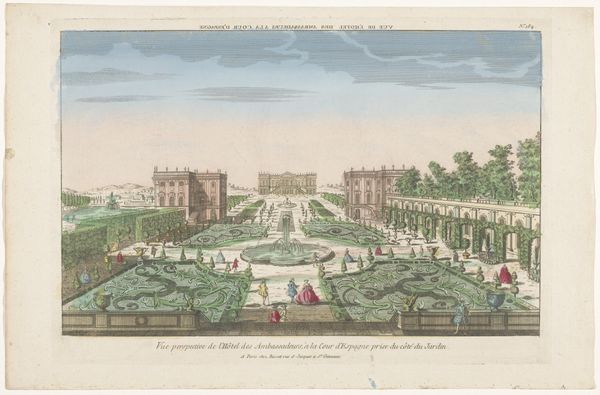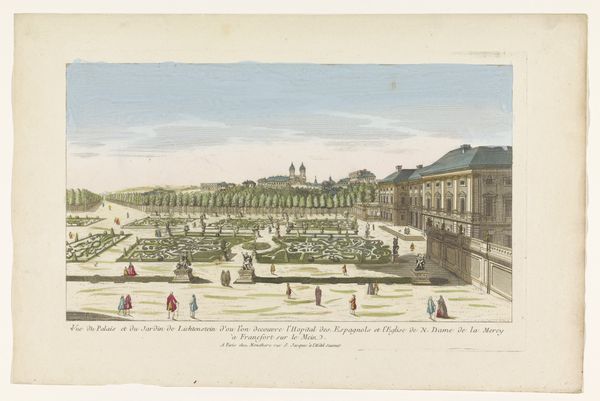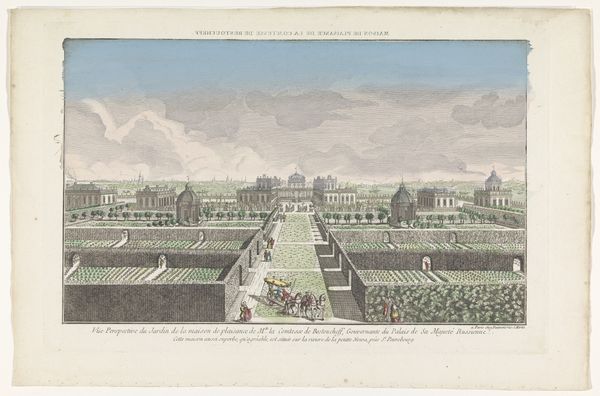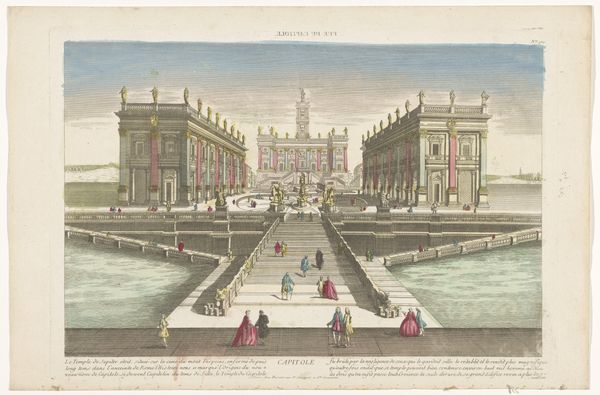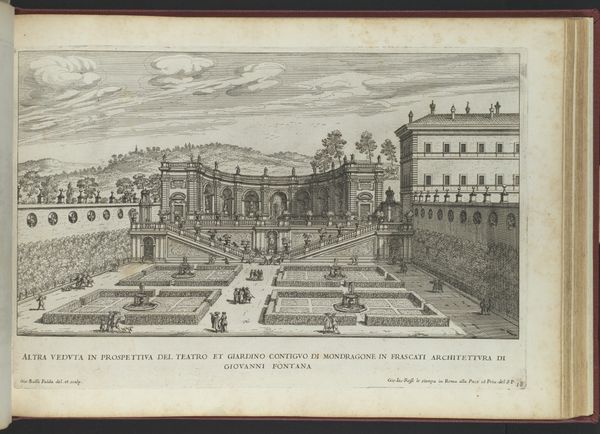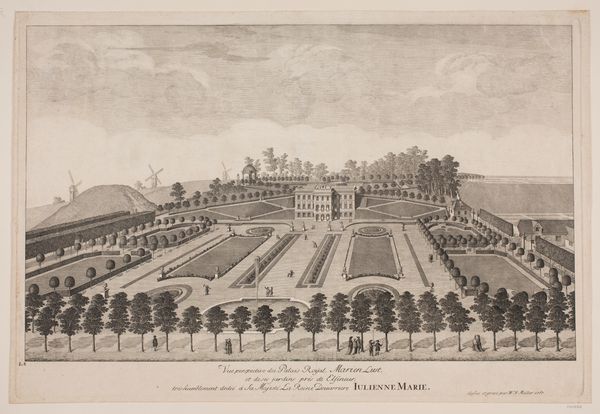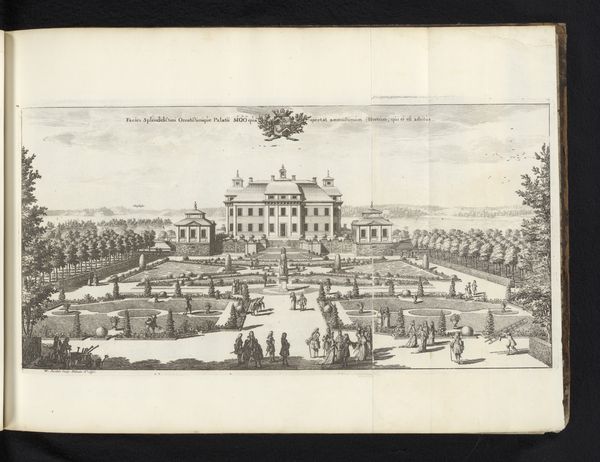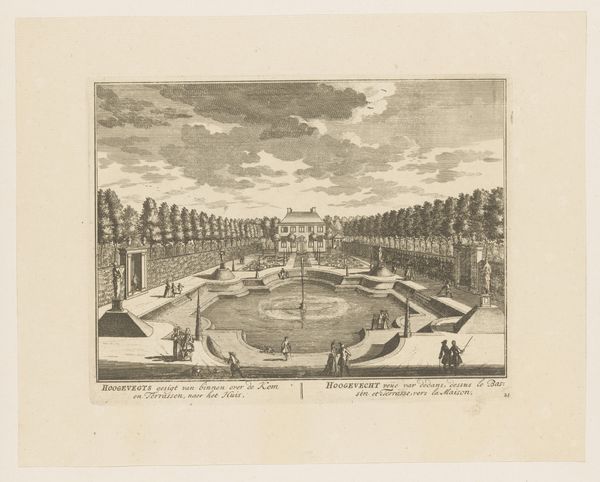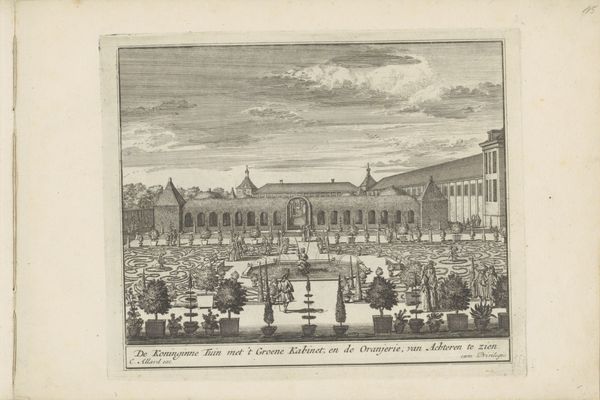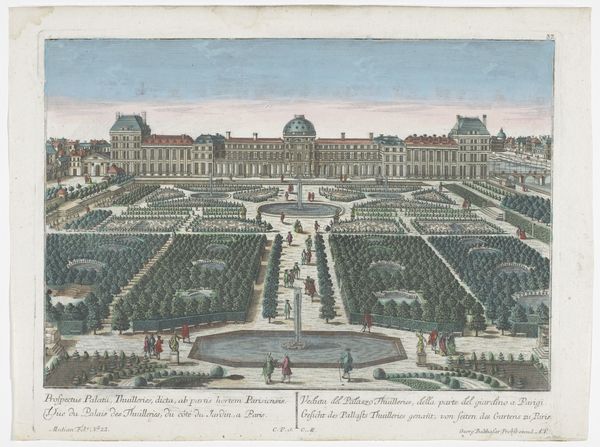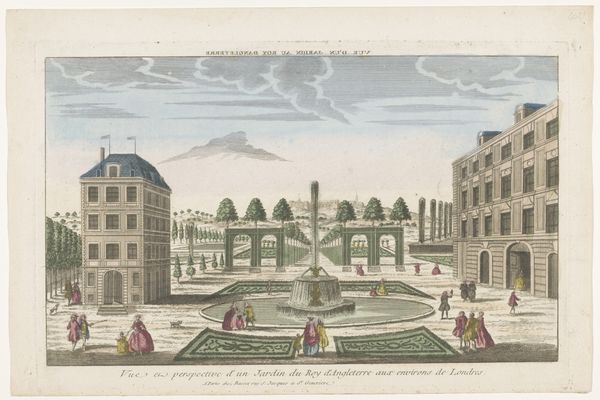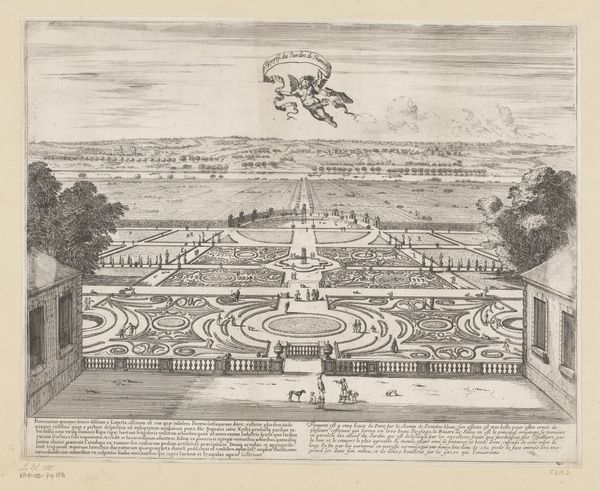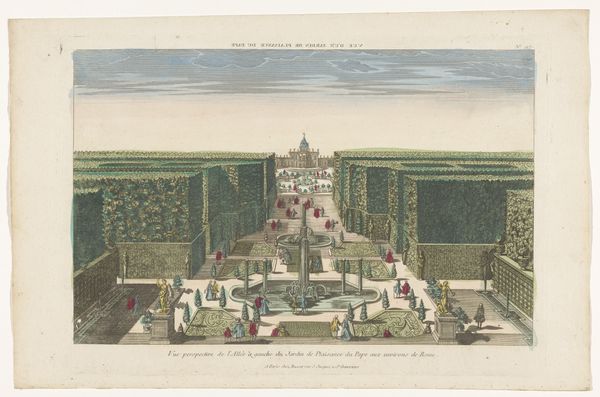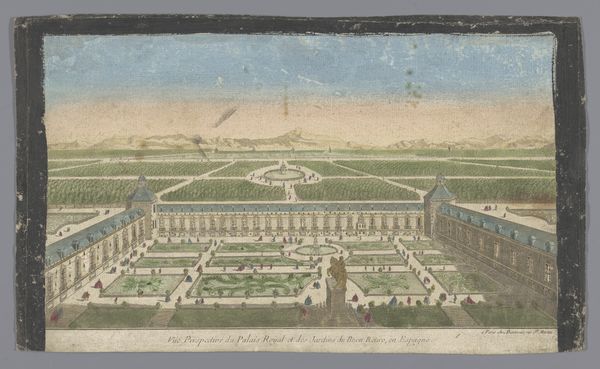
painting, print, etching, watercolor
#
painting
# print
#
etching
#
old engraving style
#
landscape
#
watercolor
#
coloured pencil
#
cityscape
#
genre-painting
#
watercolor
#
rococo
Dimensions: height 294 mm, width 425 mm
Copyright: Rijks Museum: Open Domain
Curator: We're looking at an 18th-century print from the Rijksmuseum entitled "Gezicht op een buitenhuis van de paus," or "View of a country house of the Pope," mixing etching and watercolor. What strikes you immediately? Editor: The sheer scale of the formal gardens. The work seems to suggest a triumph of manmade construction over nature. There must have been a massive deployment of resources and labor to create such a highly-controlled artificial scene. Curator: Absolutely. Consider the Pope's country house not just as a residence, but as a statement of power. The symmetrical garden with the fountains, statuary, manicured trees, suggests perfect order, a visible manifestation of divine and earthly authority. Even the carefully placed figures seem subordinate to the overall composition. Editor: These constructed, designed vistas would take generations of workers and specialists to achieve. I see labor being organized into guilds and paid for piecework that was completed under contracts awarded to different parties. And look at the amount of water required for fountains! Curator: And isn’t the choice of viewpoint telling? We're elevated, observing from a distance, positioned, one could say, to admire and maybe even to feel a slight intimidation from this demonstration of papal might. This piece is about Rococo sensibilities. Think of it: artificial landscapes and how it plays into idealized nature in art. Editor: What's interesting to me is the degree to which "Nature" itself is a raw material that's organized and rendered in terms of capital. The image almost renders "natural" forms into abstract symbols like monetary currency itself. This makes it seem more akin to speculative architectural renderings than idyllic landscapes. Curator: But in this perspective, isn't it compelling how it offers us, even today, a visual shorthand for opulence and authority. The long shadow of cultural legacy is evident. It also represents power relations still in motion today. Editor: The work then presents to the public the transformation of resources into images. Even its original audience understood their society through how land, materials and laborers could become impressions. Curator: Thinking about the legacy, and seeing the garden idealized here is making me want to grab a pair of walking shoes. Editor: Whereas, looking at this etching, I start wondering if a full accounting could be made of the costs for creating that illusion.
Comments
No comments
Be the first to comment and join the conversation on the ultimate creative platform.
